As future collisional cascading increases the numbers of space debris in low Earth orbit, various consequences will follow. One of the secondary effects that is sometimes mentioned is the increase in skyglow due to the scattering of sunlight from large numbers of micron-sized particles. This has the potential to extend the twilight hours at dark sky sites. We have made approximate calculations using simple models and find that although this is not a problem with current levels of debris, the sky brightness at dark sites can be expected to double in a few hundred years. We discuss the implications of such an increase.
orbital space debris, low Earth orbit, astronomical effects, skyglow, observational degradation
Evolution of the population of space debris in low Earth orbit through collisional cascade will bring with it a number of consequences. The primary one of these is of course is destruction of active satellites through collision with centimetre and larger sized pieces of debris. However, there a number of secondary effects that have been postulated. One of these is the effect of space debris on ground based astronomy.
Astronomical images are increasingly showing orbital space object trails on long exposures. These will only increase, and will ruin deep field images that take many hours to achieve. These trails are caused by both active satellites and the larger pieces of space debris. However, much smaller debris (micron-sized) is many orders of magnitude more prolific and it has been speculated that a sufficiently large cloud of these microscopic particles has the ability to scatter sunlight and increase the skyglow, and thus the limiting magnitude at dark sky sites.
We have examined this phenomenon using simple models and approximate calculations and find that while there is no immediate threat, in several hundred years the micron sized population of space debris has the potential to double the existing skyglow contribution at dark sky sites for a few hours after evening twilight and before morning twilight.
Space debris is created through a number of mechanisms. Satellites and rocket bodies may explosively fragment through the release of internal stored energy (eg batteries, unspent fuel). Much less energetic fragmentation occurs through deterioration of an object (eg paint chips leaving a surface). Accidental and deliberate hypervelocity collisions are not currently very frequent in low Earth orbit, but can have devastating consequences when they occur (eg a deliberate Chinese collision now accounts for about 20% of all low Earth centimetric and larger orbital space debris).
Although not currently important, eventually collisional cascading will account for the majority of orbital space debris creation, at least in LEO [1]. This is equivalent to a chain reaction where one collision produces sufficient debris to cause several other collisions, and so on. Eventually the situation becomes so dominated by collisions that newly launched satellites will be destroyed within a few months of launch. The simple model of Farinella and Cordelli [2], previously discussed by Kennewell and Brockman [3], has been modified for this analysis. The new equations are:
In the real world, each collision produces a pseudo-continuum of sizes with the size distribution given by the form:
N (>d) = k d-s
where N is the number of debris pieces exceeding a diameter of d, and k and s are constants.
After a large number of collisions in any population similar to this (eg asteroids, meteoroids) it is found that s tends to a value of 2.
Figure 2 shows the empirically determined population size distribution of low Earth orbital debris in 1998 [4]. Even after this short a time period the exponent is close to -2.
Table 1 shows the output from the above model with the specified constants, coefficients and boundary conditions. The column labelled ‘microdebris’ is the predicted number of objects between 100nm and one micron in size assuming an inverse square law size distribution and a current population of ten-centimetre-sized debris of ten thousand.

Figure 2. The number of debris objects in low Earth orbit (between 200 and 1600 km
altitude) estimated by the NASA Orbital Debris Program Office as of 1998. This
distribution may be approximated by the empirical expression N (>d) = 800 d-1.9 where d is
in metres. Many different types of sensors, as indicated, are required to provide the data
covering such a large size range.
Image credit:NASA Orbital Debris Program Office
Date Sats Debris Microdebris Areal Density
(yr) (num) (num) (num) (num/m2@1000km)
2000 2000 5.0E+04 1.0E+16 1.5E+01
2050 6986 3.3E+05 6.5E+16 9.6E+01
2100 11913 7.2E+05 1.4E+17 2.1E+02
2150 16689 1.4E+06 2.8E+17 4.2E+02
2200 21110 2.8E+06 5.6E+17 8.3E+02
2250 24670 6.0E+06 1.2E+18 1.8E+03
2300 26181 1.3E+07 2.7E+18 3.9E+03
2350 23565 2.9E+07 5.9E+18 8.6E+03
2400 16100 5.7E+07 1.1E+19 1.7E+04
2450 8206 9.1E+07 1.8E+19 2.7E+04
2500 3960 1.3E+08 2.5E+19 3.7E+04
2550 2324 1.7E+08 3.5E+19 5.1E+04
2600 1525 2.5E+08 5.0E+19 7.3E+04
2650 910 4.1E+08 8.2E+19 1.2E+05
2700 351 1.1E+09 2.1E+20 3.1E+05
Table 1. Simple collisional model output with the constants/coefficients A-γN=100,
χ=3x10-10, α=2000, β=50, λ=0.0001, ε=1000, D=10-4. The last column is the areal density of
microdebris (100-1000nm) assuming it all lies in a thin spherical shell at around 1000 km
altitude.
LIGHT SCATTER FROM A DEBRIS CLOUD
Space objects in low Earth orbit currently range from about 200 to 2000 km altitude, but the majority orbit between 600 and 1600 in a bimodal distribution with peaks at 800-1000 and 1400 to 1500 km. For our simplified calculations we assume a spherical shell of debris orbiting at 1000 km.
For such a cloud the Sun will illuminate it, from below up to a solar depression angle of 30 degrees, whereas astronomical twilight ends when δ>18 deg. At low latitudes, around the equinoxes, the Sun will typically be at &delta=30o about 45 minutes after astronomical twilight ends. At latitudes >40o in the summer the dust cloud will be permanently illuminated. Sky brightness is typically measured in magnitudes per square arc-second, and the best dark sky sites in the world have values of around 22. The limit is mainly due to skyglow from chemical reactions in the lower ionosphere around 80 km altitude.
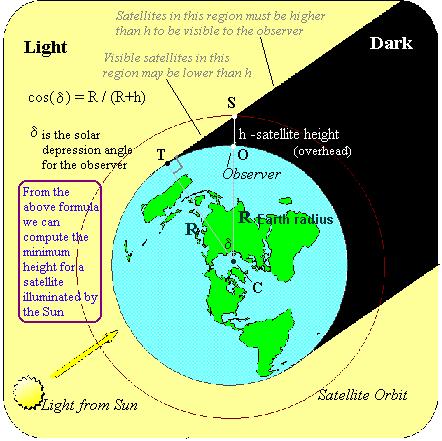
Figure 3. Diagram showing orbital objects illuminated by sunlight
The scattered solar flux due to a cloud of n particles per square arc-second of effective diameter de is given by:
Lc = n S Γ de2 (1 + sinδ) / 32 h2
where S=1376 Wm-2 is the incident solar flux, Γ is the particle albedo (typically 0.1), and h is the particle height (1000 km). This may be converted to a magnitude by noticing that the incident solar flux is equivalent to magnitude -27:
mc = 2.5 log ( S / Lc) - 27
Now if the total debris shell contains N particles of a given size, the number in an area of 23.5 m2 (which, at an altitude of 1000 km, subtends 1 square arc-second at the Earth's surface) is given by n = 3.4 x 10-14 N. Thus we can compute the required cloud numbers:
N ≈ 1015 h2 / Γ de2 (1 + sinδ) 10 ( m + 27) / 2.5
For a fixed mass of material, simple considerations indicate that a large number of smaller particles are more effective at scattering light than is a small number of large particles, simply because they offer a larger area to scatter the incident light. However, the wavelength of light limits the smallest size of useful scatterers.
With a wavelength of 500 nm for the peak intensity of sunlight, Mie scattering (figure 4) is most effective for a particle diameter between 100 and 200 nm, and the effective scattering area of such particles will be around twice their actual cross sectional area. Of course particles with larger diameters will contribute as well but there will be fewer of these.
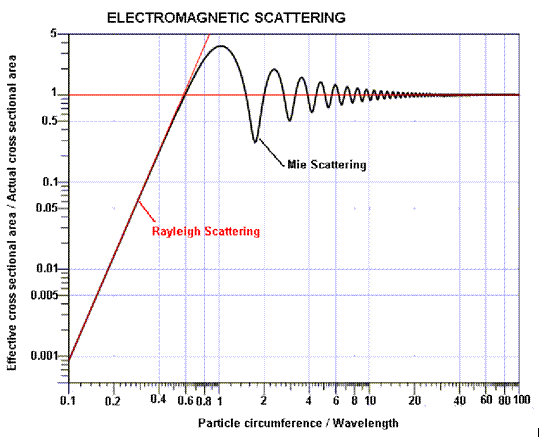
Figure 4. Scattering cross-section of metallised spheres (space debris consists
predominantly of aluminium particles) as a function of normalised wavelength.
Using a diameter of one micron and a solar depression angle of 30o, the above equation shows that we need a debris cloud with a total population of between 1019 and 1020 such particles to produce a sky brightness of 22 magnitudes per square arc-second.
The model output presented above indicates a microdebris population of 1019 around 400 years in the future, rising to
1020 before 700 years have elapsed.
As of the present time there is around five million kilograms of mass in orbit. If current launch practices continue and no effort is made to actively remove debris from orbit (which is both technologically difficult and very expensive), we might be justified in assuming that this mass will increase by around 107 kg every hundred years. The total mass in orbit as a function of time is thus M ≈ 105 ΔT where
ΔT is in years.
Now the number of particles of diameter d that have a combined mass m is n ≈ 2 m / ρ d3 where ρ = 2700 kg
m-3 is the typical density of space debris. If we further assume that a fraction μ of the total mass appears, through collision, as micron-sized debris, the time at which n such particles are present is given by:
ΔT ≈ n ρ d3 / ( 2x105 μ )
If we assume μ = 0.001 and n = 1019 then ΔT
≈ 150 years. Ten times this interval would be required to give 1020 particles.
DISCUSSION
If current space operations continue unchanged, there will be enough mass in orbit that through collisional cascade, sufficient microscopic particles will be produced to have the potential to double the current skyglow background at astronomical dark sites around the world on a time frame of several hundred years.
Although a minor effect of orbital space debris, increased background light decreases the contrast between celestial objects and their background, thus decreasing the signal-to-noise ratio of their observation and hence detectability. It also has an impact on the value of existing telescopes. If the sky background is doubled the performance of a telescope is reduced to the equivalent of one that is only about 39 per cent of its aperture.
Footnote: As of 2023 it has become apparent that the amount of debris in low Earth orbit is increasing greatly from the predictions given above and that the time to increase the background sky brightness by one magnitude per square arcsecond is likely to
occur in one tenth the interval estimated above - ie in a time frame of tens of years rather than hundreds of years!
REFERENCES
1. Kessler, Donald J. and Cour-Palais, Burton G., “Collision Frequency of Artificial Satellites: The Creation of a Debris Belt”, Journal of Geophysical Research, Vol. 83, No. A6, 1978, pp. 2637-2646.
2. Farinella, Paolo and Cordelli, Alessandro, “The Proliferation of Orbiting Fragments: a Simple Mathematical Model”, Science and Global Security, Vol. 2, 1991, pp. 365-378.
3. Kennewell, John and Brockman, Alan, “Space Debris Limitations to Low Earth Orbit Operations”, Proceedings of the 7th Australian Space Science Conference, Sydney, 2007.
4. Portree, David S.F. and Loftus Jr, Joseph P., “Orbital Debris: A Chronology”, NASA TP-199-208856, 1999, p.3.
5. Crawford, David, L., “Light Pollution, an Environmental Problem for Astronomy and Mankind”, Memorie della Societa Astronomia Italiana, Vol. 71, 2000, pp 11-40.
 Australian Space Academy
Australian Space Academy
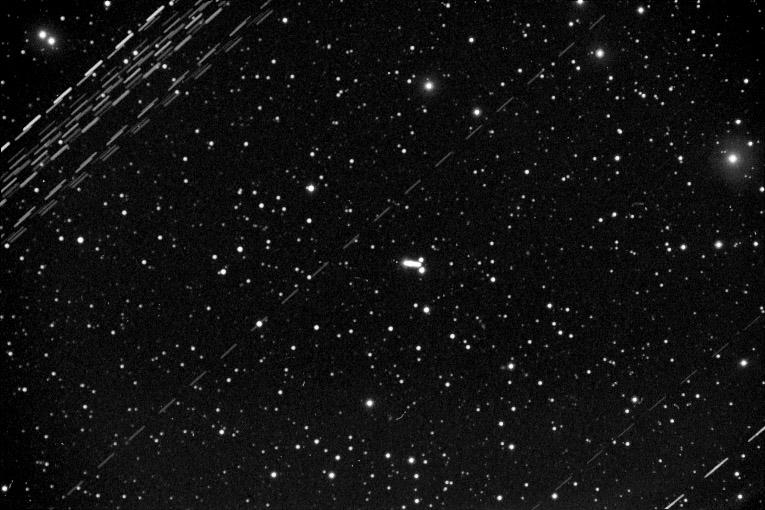
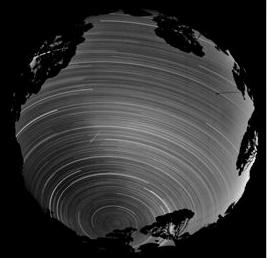
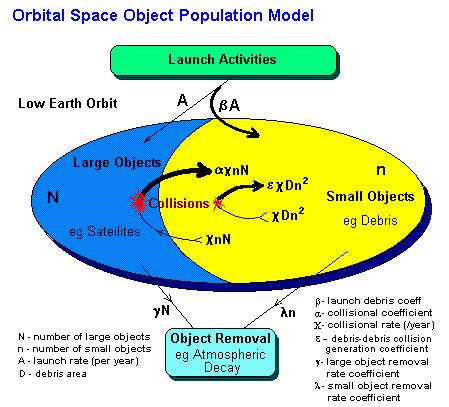



 Australian Space Academy
Australian Space Academy